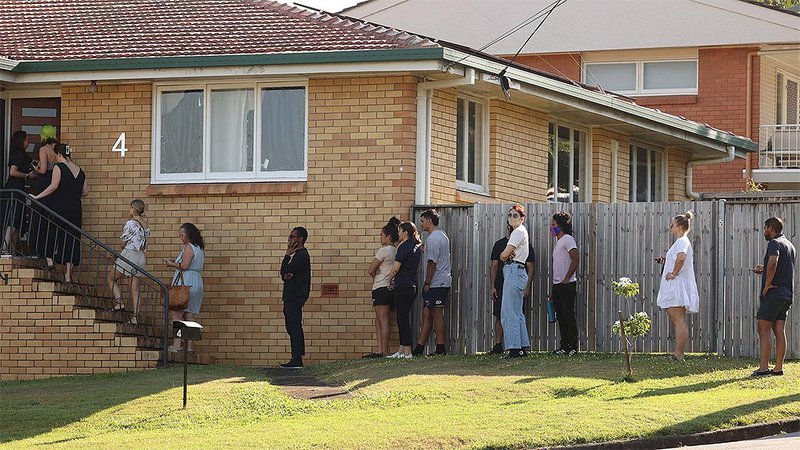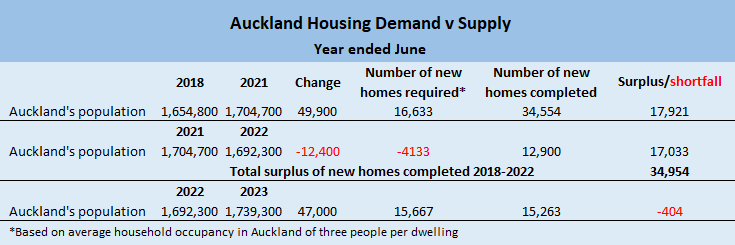Immigration driven population growth in Auckland means demand for housing is starting to exceed supply

By Greg Ninness
Auckland could be on the verge of another housing crisis as the recent surge of immigration-driven population growth outstrips the supply of new homes being built in the region.
The latest figures from Statistics NZ show Auckland's population grew 47,000 in the 12 months to June this year, mainly driven by high levels of international immigration.
Auckland has an estimated average household occupancy of three people per dwelling, so an extra 47,000 people would, on average, require an additional 15,667 homes to house them all.
However the latest Auckland Council figures show the number of new dwellings completed in the 12 months to June this year fell just short of that at 15,263, leaving a shortfall of 404 homes for the year.
Although the shortfall of homes is not large, it is significant, because it is a reversal of the trends over the last few years when low levels of immigration and high levels of residential building saw the supply of new homes in Auckland exceeding demand from population growth.
The Statistics NZ figures show that over the three years from June 2018 to June 2021, Auckland's population increased by 49,900, or an average of just 16,633 a year, largely due to immigration coming to an almost complete standstill following the introduction of Covid-related travel restrictions.
To satisfy that population growth, an additional 16,663 new homes would have been required over that three year period, but Auckland Council figures show that 34,554 homes were actually completed, more than twice as many as required to handle the increase in population, giving a surplus of 17,921 homes over the three years.
In the following 12 months from June 2021 to June 2022 that trend was even more dramatic. Auckland's population over the 12 months went into reverse and actually declined by 12,400, leading to a reduction in demand for new homes of 4133.

But residential construction in the region continued to increase and 12,900 new homes were completed in the year to June last year, giving a surplus of supply over demand of 17,033 homes for the year.
That means over the four years from June 2018 to June 2021, the supply of new homes in Auckland exceeded the demand created by population growth by just under 35,000 homes.
However that situation reversed completely over the the following 12 months as the government reopened the immigration floodgates, largely in response to employers' calls for more overseas labour.
Up until March last year the number of people arriving in New Zealand on work visas was just a few hundred a month, but that started rising rapidly from April last year, passing 10,000 a month in September last year.
In the month of September this year, just under 20,000 people arrived in the country on work visas, with Auckland likely to be the most popular destination.
But at the same time, residential construction in Auckland has peaked and is expected to steadily decline over the next couple of years.
Those trends meant that over the 12 months to June this year, Auckland's population increased by 47,000 people, requiring an additional 15,667 homes.
But only 15,263 new homes were built. leaving a shortfall of 404 homes for the year.
That suggests the Auckland housing market is at a turning point where immigration-driven demand starts to outstrip supply, which could see a return of the housing shortages that plagued the region prior to 2020.
It could also see pressures rising on the infrastructure required for new housing such as water, sewerage and electricity supply and on other public services such as transport, health and education.
This story was originally published on Interest.co.nz and has been republished here with permission.




